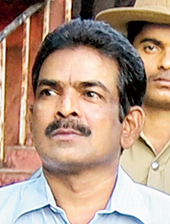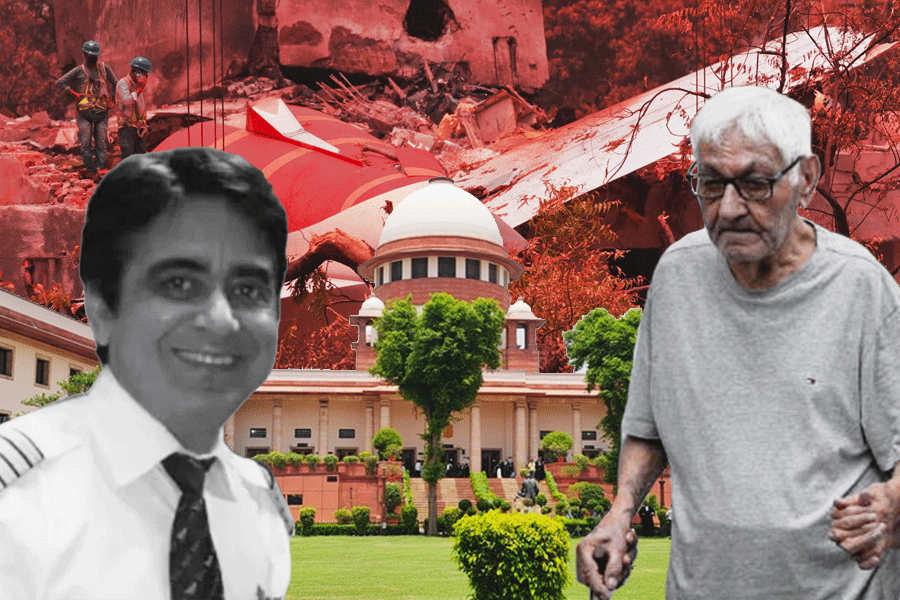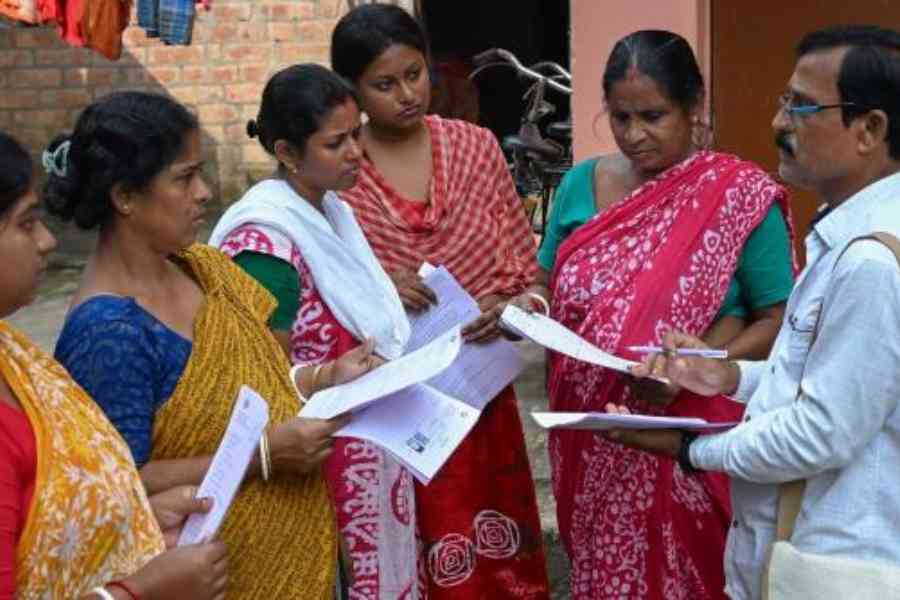 |
Anitha Moolya wanted to look her best. So she dressed in an off-white sari with a zari border and tucked in fresh flowers at the top of her neat plait. She wore new gold earrings, along with glass bangles, and a new pair of footwear.
She had good reason to want to look good; she was getting married in a few hours’ time in a temple. As her boyfriend waited, she hurried into a women’s toilet at Hassan town’s inter-city bus stand. And then she collapsed and died.
Anand Kulal was waiting a short distance from the toilet and saw the crowd milling around her. He walked away and was soon swallowed by a stream of people. He returned to the hotel where he and Anitha had spent the night, picked up their belongings and vanished.
Kulal, actually a former primary school science teacher called Mohan Kumar, is now in a fast-track court in Mangalore — seeking to defend himself against accusations of serial killing. The police say he killed at least 20 women over five years.
He is also known as Cyanide Mohan. The victims — including Anitha — were given cyanide in pills that Mohan told them were contraceptives, say the police.
The case has been taking curious turns ever since the 2009 murder of Anitha. To begin with, the Hassan city police suspected the girl had been crossed in love and taken her life.
After Anitha left home, Dakshina Kannada district’s richly forested hills and plunging valleys with rivulets crisscrossing the coconut and areca nut groves boomed with the sounds of protests. Local right wing organisations alleged she was the latest victim of “Love Jihad” — a name given to the belief that Muslim youths were luring Hindu women away and converting them to Islam.
And while the locals protested, the police believe Mohan carried on with his murderous plans. He allegedly killed four women after Anitha. In 2009 alone, nine women were killed for the jewellery and the money they carried. All of them died in public toilets at bus stations in Mysore, Bangalore, Madikere and Hassan.
His method, the police say, was simple. “He observed unmarried working women from middle-income and lower-income backgrounds at bus stops and became friendly with them. He then proposed marriage. He wanted no dowry, he said, and urged the women to elope with him to faraway towns after swearing them to secrecy,” says Nanjunde Gowda, head of the Sampigehalli Police Station, Bangalore, who had investigated the disappearance cases.
 |
Mohan allegedly had 12 aliases, and mostly chose a surname that indicated the same caste as that of his victim. After taking a room in a small lodge, he would have sex with his victim on the night before the so-called wedding, and then give her cyanide.
“Not being asked for dowry is a big thing in these parts, and he took advantage of that vulnerability. Many women left their homes with their best clothes and jewellery,” says Chandra Gupta, superintendent of police, Bellary, who as former assistant superintendent of police, Puttur, led the investigations.
One of Mohan’s victims, Sunanda Poojary, even took a bank loan of Rs 25,000 before eloping with him.
Finally, with the help of Anitha’s cell phone records, the police zeroed in on Mohan, who had used the phone to get in touch with some of his other victims, says Gowda.
Mohan was arrested in October 2009 from Deralakatta village near Mangalore from the house of his third wife Sridevi Rai. The police say they recovered vials of cyanide, fake identity and visiting cards in various names, fake government seals and rubber stamps, gold ornaments and mobile phones from the house.
The police say they also found a diary where he had maintained a list of all the women he had approached. He struck off the names of those he’d had no success with by marking their names in red. Of every 10 women he met, he apparently succeeded with two.
According to the police, Mohan tried to kill his first victim by pushing her off a bridge into the river Nethravathi in the temple town of Dharmasthala. The woman was rescued and a case of attempted murder registered, but the case fell through in a local court.
He was dismissed from his teaching job in 2005 after his arrest in the case. Mohan, the police believe, learnt about cyanide from a goldsmith who told him about its use in polishing gold. He allegedly posed as a goldsmith and obtained the poison from a chemist in Puttur.
“He was extremely intelligent and cold blooded. But like other criminals he left many traces,” says Gowda. For instance, he used several names while checking into lodges, but gave the same address. The police say experts have verified his handwriting. Cheyabba Beary, the special prosecutor in the case, says Mohan deposited jewellery in gold loan companies under his own name. “All the jewellery has now been recovered and we are presenting it as evidence,” says Beary.
Taking on Beary is Mohan himself. Prisoner number 2395 spends most of his time in the Mangalore District Jail’s Quarantine Cell, going through his charge sheet, newspapers and law books.
Dressed in a well-ironed light blue shirt and pale brown trousers, Mohan walks confidently into the packed court of Ninganagowda Jantli. The court is taking up three cases for now — that of Anitha, Sunanda Poojary and Leelavathi Mestri.
He looks considerably younger than his 46 years, with a shock of black hair and a thick moustache. The judge once again asks him if he’d like to hire a lawyer. He shakes his head.
“I can’t afford a good lawyer and I don’t think a court-appointed lawyer will fight my case effectively,” says an assured Mohan after the court proceedings as he waits for a police vehicle with a posse of policemen. Refusing to answer other questions, he says the prosecution is spreading lies by “tutoring” witnesses. The prosecution has lined up as many as 60-75 witnesses in each of the three cases.
“Kumar may be digging his own grave,” says Mangalore criminal lawyer Ashok Kumar P., who has observed the case closely. “He is indirectly and unintentionally admitting his criminality while cross examining the witnesses.” Either he is being naïve, or it’s a strategy, he adds. “If he is convicted, he could ask for a retrial with the plea that he might not have been competent enough.”
The case, in fact, is not as air-tight as the police would like to believe. For instance, cyanide has been identified by doctors only in one case. Recently, Mohan while cross examining a forensic doctor, asked why viscera samples were not collected from the victims.
Also, there are no direct witnesses to the case. “There is indirect evidence, but most of the witnesses are either the victims’ relatives and friends or stock witnesses of the police who are tutored. There are no material witnesses,” says Ashok Kumar.
But Machendra Nath, a Barimar shopkeeper and one of Anitha’s neighbours, believes they have a strong case. “So many witnesses cannot be wrong. We have high hopes,” says Nath.
And if the testimony of Eshwar Bhat, a priest in Bantwal’s Durga Parameshwari temple is anything to go by, Anitha’s death did have some impact on Mohan. Just a day after allegedly murdering her, he asked Bhat if there was a special puja to wash away the sins of killing a woman.
“I was shocked, but thought that he was a bit off and told him to offer Kumkuma archana which he did,” says Bhat.
The case has evoked considerable interest in Mangalore. Srikanth Hegde, a businessman who has been following it, compares Mohan Kumar to Charlie Chaplin’s Monsieur Verdoux who, in the eponymous 1947 film, killed wealthy widows.
Hegde believes Mohan deserves what Verdoux got in the film. “Death,” he says drawing a noose in the air. But Mohan is not giving up the battle yet. And the judge is still to bring down his gavel.










